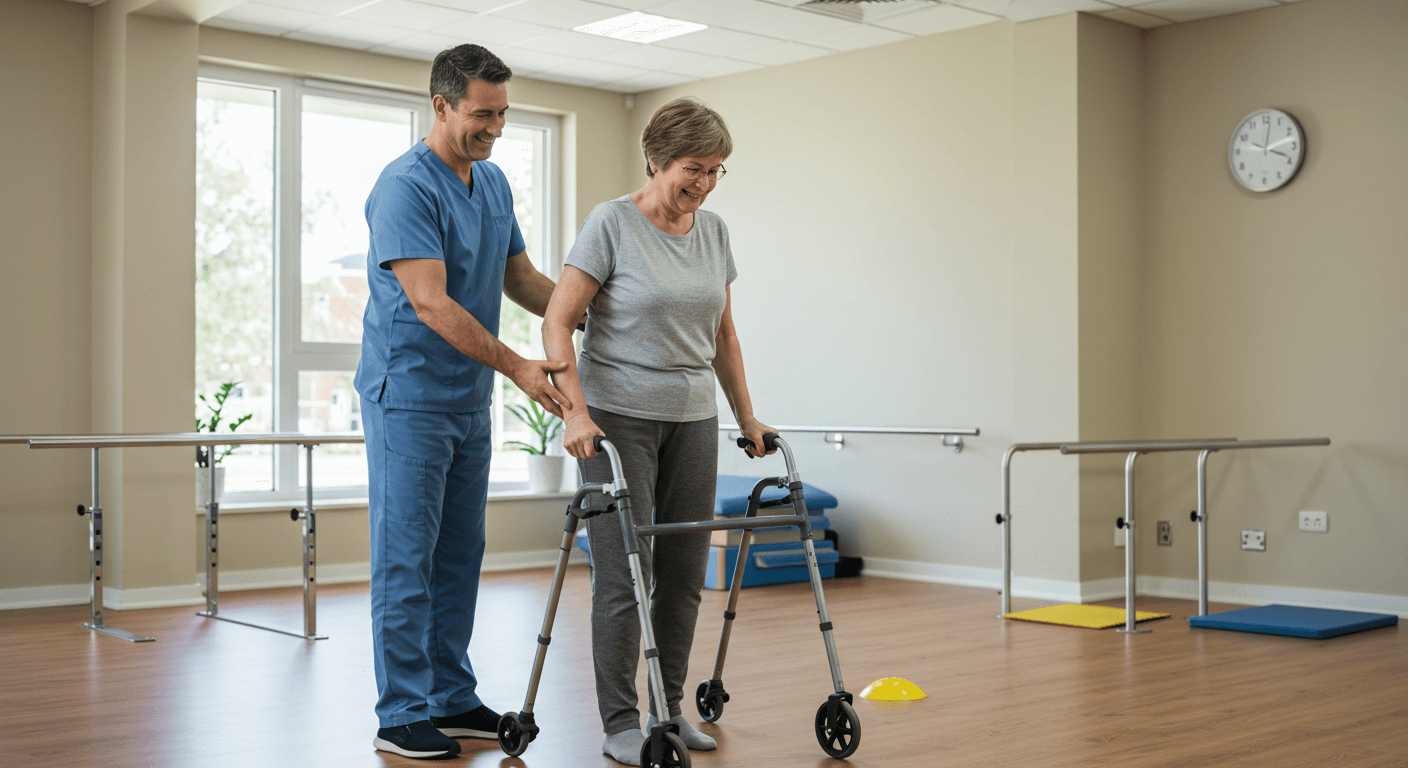

Imagine trying to take a step, but your foot won’t move. You tell your muscles what to do, but they just don’t respond. For millions of people recovering from a stroke or living with a spinal cord injury, this is a daily reality. Movement that once felt effortless is now a constant struggle.
Rehabilitation takes time, but for many, progress feels slow—or worse, it stops completely. Traditional therapy has limits, and patients often hear, “This is as good as it gets.” But what if there was a way to help the body relearn movement more effectively?
Groundbreaking research has found a new way to improve movement in people with stroke and spinal cord injuries. Scientists discovered that adaptive electrical stimulation can help the nervous system restore function—something that could be life-changing [1].
For decades, doctors have used neuromuscular electrical stimulation (NMES) to help activate muscles. But this new study, led by top researchers, takes NMES to the next level by making it adaptive [1].
Unlike traditional therapy, this technology responds to the patient in real time, adjusting the stimulation to match what the muscles need. This means better results, faster progress, and more hope for those who have been told their recovery has plateaued.
“For years, we thought there were limits to what the body could regain after a stroke or spinal injury. But this study is proving that with the right technology, the nervous system can continue to improve.” — Lead Researcher
While this study focused on people with stroke and spinal cord injuries, the results have huge implications for anyone suffering from nerve-related movement issues—including those with neuropathy.
Many people with neuropathy experience numbness, pain, and loss of muscle strength, leading to instability and falls. The ability to activate muscles with precise electrical pulses could be a major breakthrough for those struggling to stay mobile.
Key Takeaway: If NMES can help stroke and spinal cord injury patients regain movement, imagine what it could do for people with neuropathy and circulation issues [1].
Right now, adaptive NMES is being tested in hospitals and research facilities, but what if you could access similar benefits from home?
That’s exactly what neuroPro™ does. While this study focuses on clinical applications, neuroPro™ was designed to bring NMES benefits to everyday people struggling with neuropathy, foot pain, and poor circulation.
“Doctors are already using NMES for nerve-related movement issues. Now, neuroPro™ makes it possible for neuropathy sufferers to experience these benefits from home.”
This breakthrough research proves that neuromuscular electrical stimulation can restore movement and improve quality of life. Now, thanks to neuroPro™, you don’t have to wait for hospital-grade technology to start seeing results.
Why wait? Adaptive electrical stimulation is already changing lives. With neuroPro™, you can bring this science-backed therapy into your home today.
Research Study: *Adaptive Inverse Optimal Neuromuscular Electrical Stimulation*
Authors & Source: Published on Academia.edu